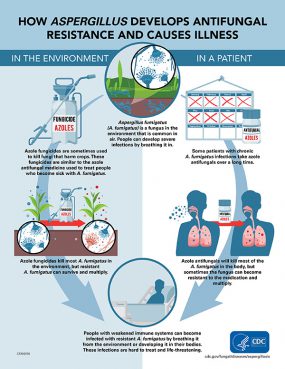Antimicrobial Resistance: People & Environment
Antimicrobial resistance happens when germs like bacteria and fungi develop the ability to defeat the drugs designed to kill them. That means the germs are not killed and continue to grow.
- Download a printable version [PDF – 1 page] of this infographic
- Learn how Aspergillus develops antimicrobial resistance in the environment
- Learn how Aspergillus develops antimicrobial resistance in a patient
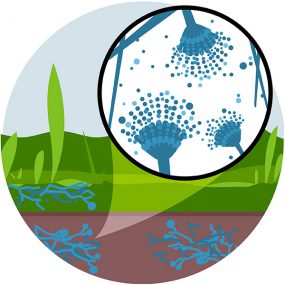
Aspergillus fumigatus (A. fumigatus) is a fungus in the environment that is common in air. People can develop severe infections by breathing it in.
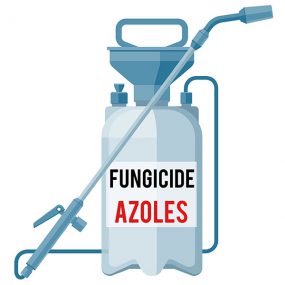
Azole fungicides are sometimes used to kill fungi that harm crops. These fungicides are similar to the azole antifungal medicine used to treat people who become sick with A. fumigatus.
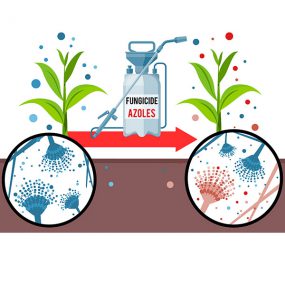
Azole fungicides kill most A. fumigatus in the environment, but resistant A. fumigatus can survive and multiply.

People with weakened immune systems can become infected with resistant A. fumigatus by breathing it from the environment or developing it in their bodies. These infections are hard to treat and life-threatening.

Aspergillus fumigatus (A. fumigatus) is a fungus in the environment that is common in air. People can develop severe infections by breathing it in.
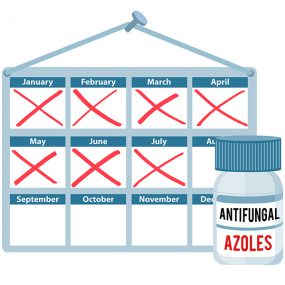
Some patients with chronic A. fumigatus infections take azole antifungals over a long time.
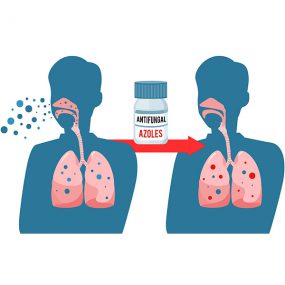
Azole antifungals will kill most of the A. fumigatus in the body, but sometimes the fungus can become resistant to the medication and multiply.

People with weakened immune systems can become infected with resistant A. fumigatus by breathing it from the environment or developing it in their bodies. These infections are hard to treat and life-threatening.
